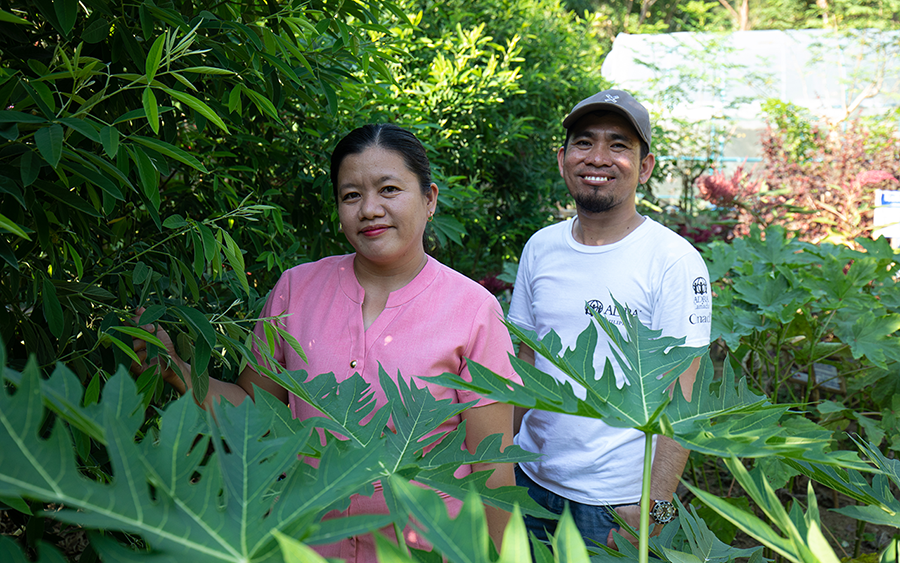The Garden Lab
The elementary school property rings with the sounds of children. Three hundred and forty children can make quite a happy din. Gina sits with a smile while the daily commotion swirls through the hallways and around the grounds. Gina’s job is to help make sure the children are as active and engaged as possible. As the school’s nutritionist, she ensures this through the school feeding program.
Three years ago, the EMBRACE project approached Gina’s school with an idea to support their feeding program. Over four years, the EMBRACE project worked to save the lives of mothers and children from preventable deaths in Rwanda, Cambodia, Myanmar, and the Philippines. One of the threats to young children in these countries is malnutrition. To lower malnutrition rates, Gina’s school in the Philippines partnered with EMBRACE to establish a school garden.

This school garden is not merely a minor experiment temporarily conducted by a class or two. It is large and lush, flourishing with home-grown crops. It is bountiful enough to feed the school’s 340 students, as well as some of the community members. It is also sustainable, as seeds from half of the plants are preserved for future plantings.
The caretakers are students from grades 4 to 6, and the garden acts as a science and life skills lab.
Gina explains, “the garden gives them the opportunity to do practical work, to identify the tools and plants, to immerse themselves in the garden. They aren’t only learning from books; they’re also learning by experience.”
The students learn to plant and to harvest, to start seedlings, and to preserve seeds. They will carry this knowledge and experience with them throughout their lives and even teach it to their children.
The garden’s indigenous vegetables were abandoned a long time ago in favour of packed, processed foods. “None of the teachers or students knew the vegetables that were introduced in the garden,” shares Gina. However, after watching and learning about the growth cycle of each plant, the students and their teachers can quickly identify them and their nutritional value. With a beaming smile, Gina says, “the garden has made everyone very happy. They’ve come to know indigenous fruits and vegetables. There is a song that everyone can sing about vegetables. No one knew what those vegetables were. But now, with this garden, they can see what those vegetables are.”
The garden is not only for the school. It is a place of learning for all in the community. Community members are allowed to come and observe all facets of gardening, from planting to harvesting. They can also receive seeds so that they can begin their home gardens.
Although the EMBRACE project has ended, the school garden and seed saving remain. The knowledge and skills given through the project continue to make a positive difference in the lives of the teachers, students, and community members.
“It’s been a big help for the community and the school,” says Gina gratefully. Several of the community members echo her gratitude, and the smiles of the children speak volumes. We appreciate your support of this truly life-changing work.
Let's make a difference together!
Related News and Stories
- News Releases, Stories
- News Releases, Stories
- News Releases, Stories
- News Releases, Stories
